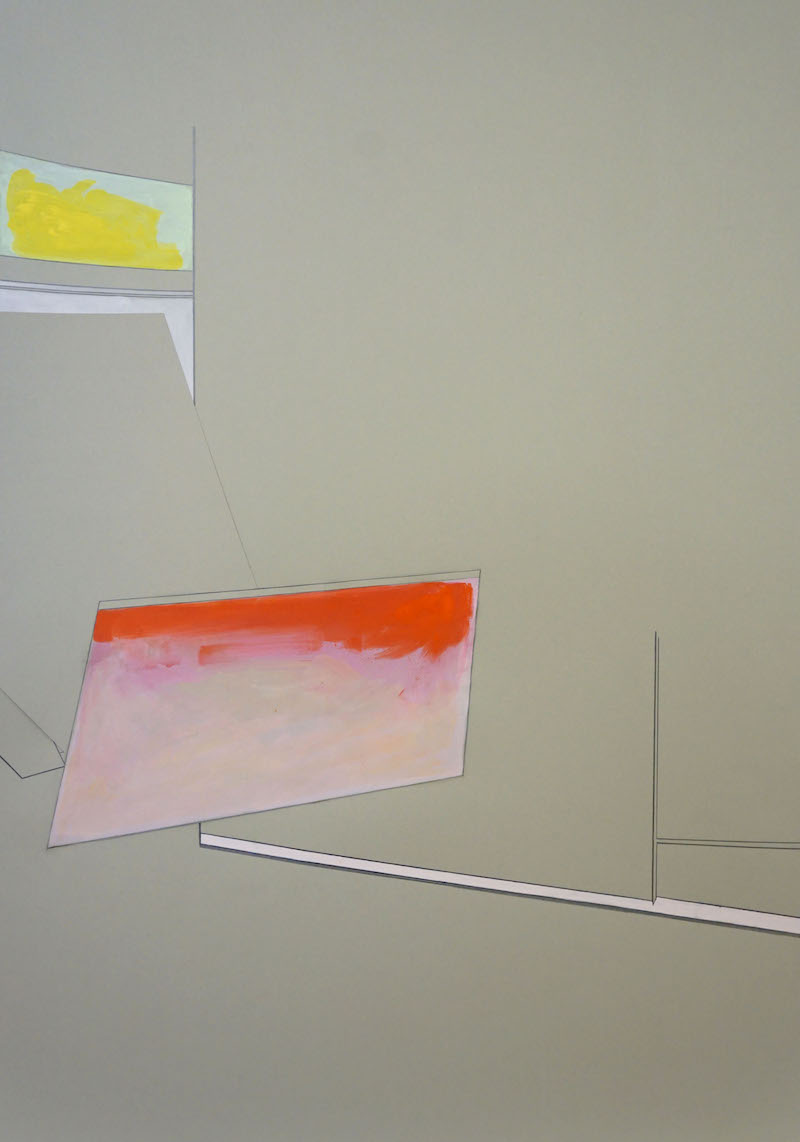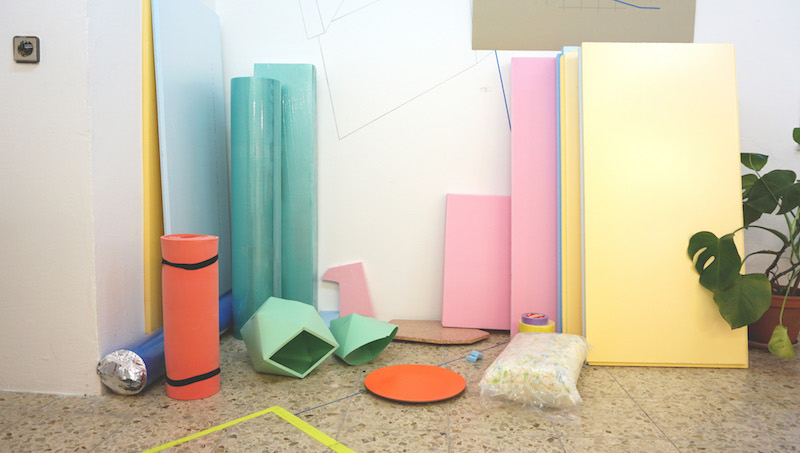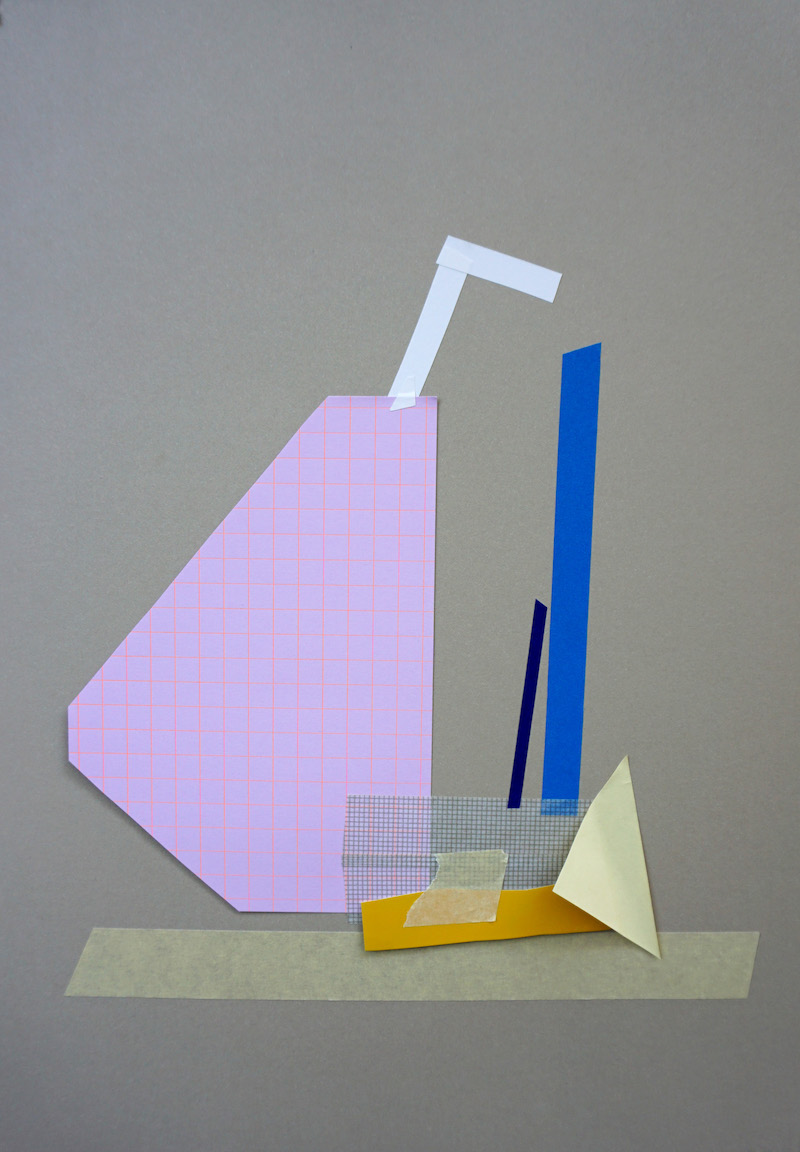 © Petra Gell
© Petra Gell
Geometric shapes, objects and bright colour fields dominate the formal vocabulary of Vienna-based artist Petra Gell. The compositions of her drawings and collages always refer to architectural structures that she observes photographically, and then decomposes to abstract lines and surfaces for her own work. This experimental process of rearranging spacial compositions on paper is further abstracted in her installation-based work, which translates the composition back into its spacial surrounding, while removing the initial architectural function. Petra, who co-found the artist collective "Die vier Grazien", told me about why architecture influences her practice.
Anna-Lena Werner: Petra, your drawings refer to shapes that you find in observations of various spaces and architectures, which you often photograph. What do you see in those forms?
Petra Gell: I regard them as compositions of lines, colours and surfaces. On the one hand they create a new spatiality – rather as an idea than a virtual architecture – and on the other hand they could indeed be reproducible, as three-dimensional objects. For me it's important that the layers and surfaces are open, not necessarily fulfilling a functional purpose.
ALW: Do you have an emotional relation to spaces?
PG: Yes absolutely! Our life takes place in different spaces and we move naturally from private to public spheres. Space also encompasses much more than physically experienceable surroundings – in-between spaces, time-spaces, life-spaces, play spaces. All of these are valued emotionally.


© Petra Gell
ALW: Certain shapes appear, then disappear and re-appear. Your drawings re-assemble real spaces and turn them into fictional compositions. Does this process feel experimentally or structured to you?
PG: I approach my works experimentally. Nonetheless, my series are structured and focused. This is generally an important aspect of my art: the connection of a stabile and real form with something abstract, fragile, light, open or non-tangible.




© Petra Gell
ALW: You designed and partly built your own house on the Austrian countryside, close to Vienna. Have previous works and observations of yours influenced decisions that you took while creating the house for your family?
PG: Building my house was turning an art project into reality. I only realised that afterwards, as all my observations and ideas fed into making this place. I considered each arrangement of a window, for example, from a painterly perspective. How do I see a wall or a space from inside? What view does the window show me? All these thoughts are now present in the house.
ALW: In your site-specific and installation-based work you place colourful arrangements into real spaces. Do you consider this type of work as an inversion your drawing practice?
PG: Yes, absolutely. What is built in a space – even when it's an object –relates to painting for me. Opening painting to this dimension also affects my works on paper: it becomes more free and open. For a long time I stored the material in my studio, not really knowing how to use it.
ALW: What kind of materials do you employ for your installations?
PG: I am primarily interested in the material's surface – its structure, form and colour. Materials could be everyday objects, but also constructions material. I transport materials to the studio, where they rest until I start working on compositions.




© Petra Gell
ALW: You seem to have established a set of repeating colours for your work. How do pick those tones?
PG: Intuitively. I suppose they do repeat – they certainly mean a lot to me, like surfaces and structures do. If the combination of colour and structure that I envision does not exist in a material then I paint it.
ALW: In an upcoming project, you plan to curate an exhibition on an abandoned site close to Vienna. Can you tell me more about this project?
PG: There are several halls located on a former military area, which will be turned into a residential area in two years time. I am planning a 3-day group exhibition with several artists and a curator who work with site-specific with the space and the architecture.
petragell.com
petragell.com

© Petra Gell
